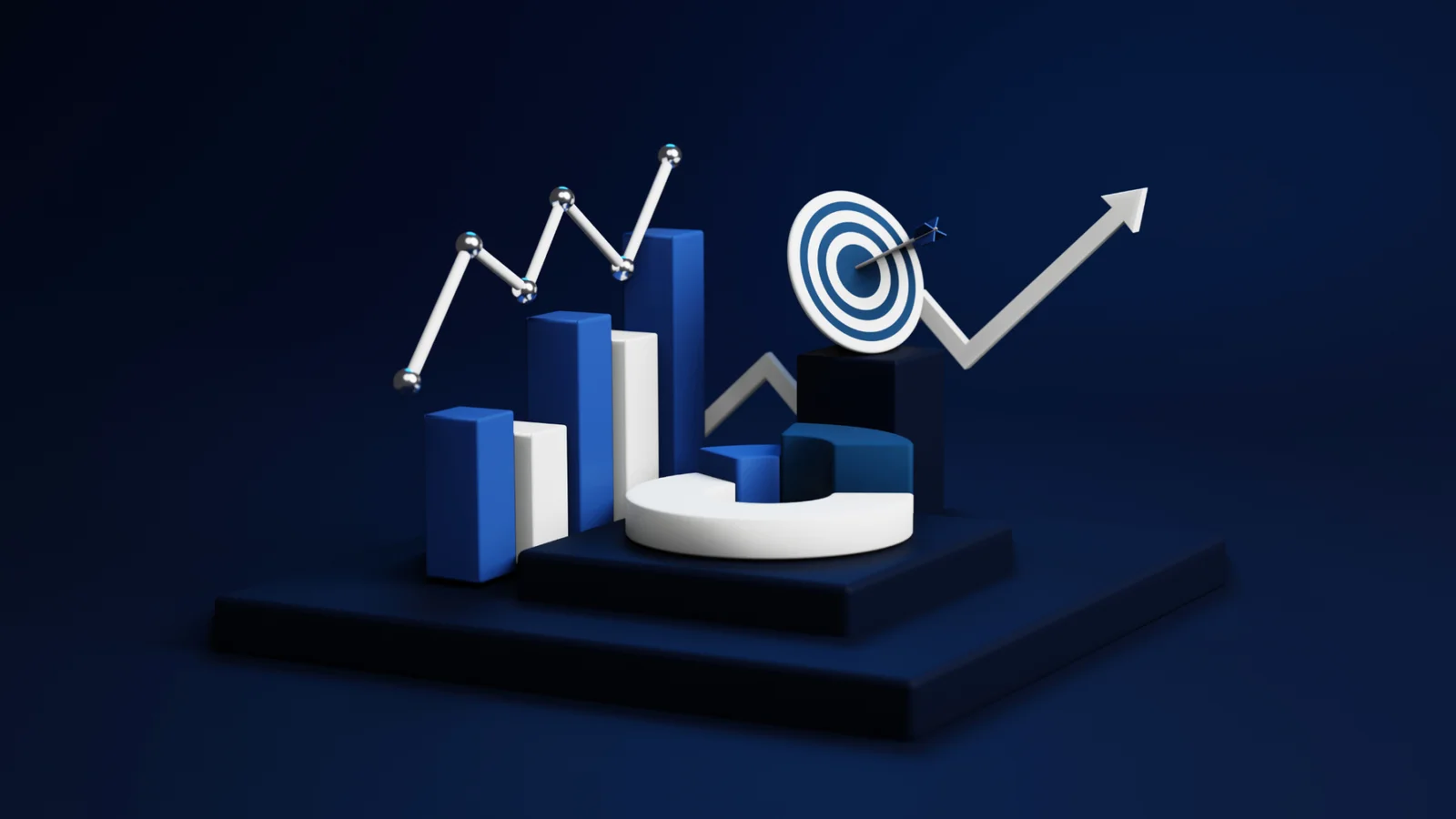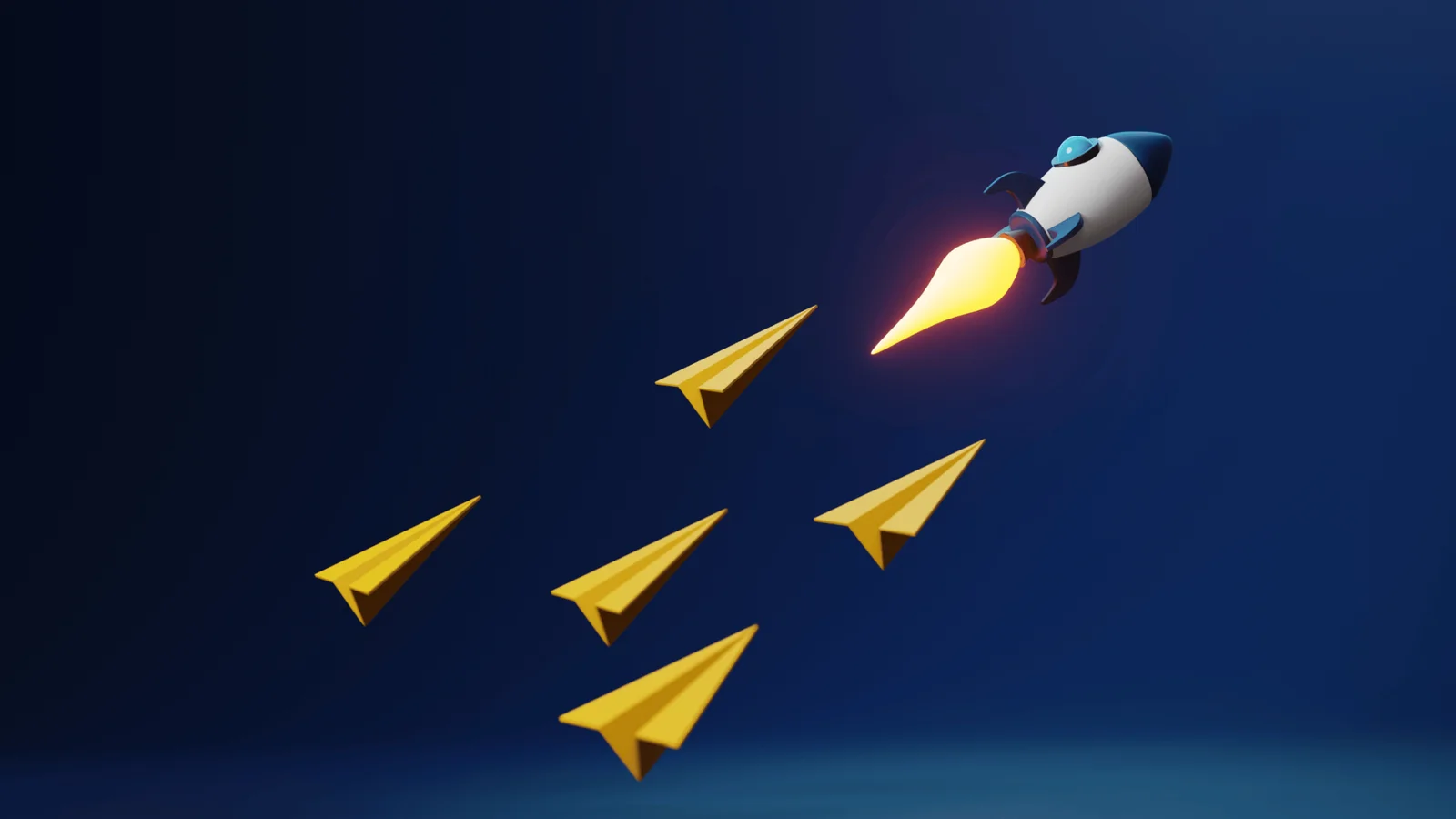Marketing strategy has become the most crucial differentiator for B2B SaaS companies in 2025. With rising competition, increasing customer acquisition costs, and rapidly evolving digital channels, businesses can no longer rely on traditional methods alone. A well-defined, data-driven, and customer-focused strategy is the foundation of long-term growth and resilience. The right marketing strategy not only drives lead generation and conversions but also builds authority, credibility, and trust in the crowded SaaS marketplace.
Over the past few years, B2B SaaS marketing has undergone a massive transformation. What once revolved around outbound sales, cold calls, and generic digital campaigns has now shifted toward hyper-personalization, value-driven content, and multi-channel engagement. Buyers today are more informed, more skeptical, and demand tailored experiences at every touchpoint. At the same time, advances in AI, automation, and analytics are equipping SaaS companies with new tools to better understand, engage, and retain their audiences.
In this blog, we will explore the evolution of B2B SaaS marketing strategies, highlight current challenges and opportunities, and provide a comprehensive roadmap that businesses can use to stay ahead of the curve in today’s dynamic landscape. From leveraging AI for smarter decision-making to embracing community-led growth, we’ll uncover how forward-thinking SaaS brands are reshaping their marketing playbooks to win in 2025 and beyond.
The Evolution of Marketing Strategy in B2B SaaS
Over the last decade, B2B SaaS marketing has undergone a dramatic transformation. In its early years, the industry relied heavily on outbound campaigns such as cold calling, mass email blasts, trade shows, and paid advertisements. These approaches were effective when SaaS adoption was still new, and buyers had limited exposure to solutions. Simply showcasing a product’s features was often enough to attract interest.
However, the modern B2B buyer has changed. Today’s decision-makers are more informed, digitally empowered, and expect tailored experiences before engaging with sales teams. They research extensively online, compare competitors, read peer reviews, and engage with thought leadership content long before they even fill out a demo request form. Traditional “push” methods now struggle to gain traction, as buyers increasingly ignore generic outreach and instead gravitate toward brands that educate, guide, and provide genuine value.
By 2025, marketing strategies are no longer centered around pushing products but around delivering value at every stage of the buyer journey. Prospects demand more than just product specifications—they look for authentic experiences, thought leadership, and solutions aligned with their unique challenges. Content-driven engagement has become a cornerstone, with blogs, case studies, whitepapers, webinars, and podcasts acting as trust-building tools. At the same time, advancements in AI and data analytics have enabled a new era of hyper-personalization, where businesses can deliver highly relevant messaging and product recommendations tailored to individual accounts or even specific decision-makers.
This evolution marks a shift from transactional campaigns to relationship-based marketing. Strategies are now powered by data-backed insights, predictive analytics, and intelligent automation, ensuring that every touchpoint adds value. As a result, successful B2B SaaS companies no longer compete just on features or price—they differentiate themselves by creating a seamless, personalized, and customer-centric experience throughout the entire lifecycle.
The 2025 B2B SaaS Marketing Landscape
Today’s environment is shaped by several critical factors that are redefining how B2B SaaS companies approach marketing in 2025:
- Buyer Behavior: Modern B2B buyers are more empowered than ever before. Studies show that they now complete over 70% of their research independently before ever engaging with a sales representative. This means they arrive at conversations with vendors already informed, having compared alternatives, read peer reviews, and consumed educational content. As a result, buyers expect vendors to provide not just product information, but also valuable insights, thought leadership, and content that addresses their specific challenges. Companies that fail to meet this expectation risk losing credibility early in the decision-making process.
- Technology Integration: Technology is at the heart of modern B2B SaaS marketing strategies. With AI-driven analytics, intent-based targeting, predictive modeling, and advanced automation tools, companies can now deliver highly personalized campaigns at scale. Marketing teams are leveraging machine learning to understand buyer intent, identify the right channels, and optimize messaging in real-time. For example, predictive lead scoring powered by AI enables businesses to prioritize high-potential prospects, while automation platforms streamline nurturing workflows to reduce manual effort. The firms that master this integration of technology and strategy are setting themselves apart as market leaders.
- Global Competition: The SaaS market is no longer confined to specific regions—it’s truly global. With companies offering similar products across borders, competition has intensified significantly. This means pricing and product features alone are no longer sustainable differentiators. To stand out, businesses must position themselves as trusted advisors by building strong brand authority and nurturing long-term relationships with customers. Establishing credibility through thought leadership content, customer success stories, and active community engagement is now a central component of staying ahead in the global race.
- Privacy Regulations: At the same time, the tightening of global privacy and data protection laws, such as GDPR, CCPA, and evolving regulations surrounding AI usage, has placed new responsibilities on SaaS marketers. Data collection, storage, and usage practices are under close scrutiny, making transparency and compliance absolutely essential. Companies can no longer afford to cut corners with privacy. Instead, businesses must embrace ethical marketing practices—clearly communicating how customer data is used and ensuring that personalization efforts remain respectful and compliant. This shift has elevated trust as a critical competitive advantage in the SaaS ecosystem.
Collectively, these factors highlight that a strong marketing strategy in 2025 must be far more holistic than ever before. Success lies in striking the right balance between personalization, compliance, and innovation—delivering campaigns that are not only impactful but also responsible, authentic, and trustworthy.
Key Components of a Modern Marketing Strategy

Instead of listing endless tactics, let’s break down the core pillars of an effective B2B SaaS marketing strategy in 2025 and explore how each contributes to sustainable growth.
1. Customer-Centric Content Marketing
Content continues to be the backbone of SaaS marketing, but the game has changed. In 2025, it’s no longer about publishing dozens of blogs per month—it’s about delivering value-driven, hyper-relevant, and interactive content that speaks directly to buyer needs. SaaS companies are investing heavily in long-form blogs, thought leadership articles, video explainers, podcasts, and even immersive experiences like interactive ROI calculators and product simulators.
The biggest shift has been personalization. AI-powered tools now allow marketers to segment content not just by industry but also by role, stage of the funnel, and even intent signals. For instance, a CFO evaluating software might prefer ROI-focused whitepapers or total-cost-of-ownership calculators, while a CTO is more likely to engage with technical deep dives, product comparison guides, or demo videos. Meanwhile, mid-level managers might gravitate toward implementation case studies or workflow-based tutorials.
By serving the right content to the right person at the right time, SaaS companies ensure that their messaging cuts through the noise. This hyper-personalized approach increases engagement, builds credibility, and ultimately drives conversions more effectively than generic campaigns.
2. Demand Generation and Brand Awareness
While lead generation used to be the central focus of SaaS marketing, in 2025 the emphasis has shifted toward demand generation. The idea isn’t just to collect email addresses but to educate, engage, and create demand for the category itself—especially for emerging SaaS solutions that buyers may not yet fully understand.
Demand generation strategies go beyond gated content. SaaS companies are hosting virtual workshops, live product showcases, and thought leadership webinars that provide real value even before the prospect becomes a customer. Publishing annual industry reports, data-backed insights, and future trend analyses also positions SaaS brands as authorities in their fields, making prospects more likely to engage when they are ready to buy.
A balanced marketing strategy blends this kind of brand authority-building with targeted lead campaigns. By staying top-of-mind through continuous education, SaaS brands ensure they are the first option prospects recall when a buying decision arises.
3. Data-Driven Personalization
The real differentiator in 2025 is personalization at scale. Buyers don’t want to feel like just another lead in a funnel—they want experiences tailored to their exact journey. Thanks to AI-driven predictive analytics, behavioral tracking, and intent-based targeting, SaaS marketers can now understand not just who their buyers are, but also what they’re likely to need next.
For example, if a prospect repeatedly visits a pricing page or spends time comparing different product tiers, an automated yet personalized email could immediately provide a tailored offer or invite them to a live consultation. Similarly, chatbots are evolving into AI-powered virtual advisors that answer complex queries in real-time while capturing valuable engagement data.
This reduces friction in the buyer journey, shortens sales cycles, and creates a seamless experience that feels intuitive rather than intrusive. Companies that master this kind of personalization are building stronger trust and significantly higher close rates.
4. Account-Based Marketing (ABM)
Account-Based Marketing is no longer just a buzzword—it has become one of the most effective strategies for B2B SaaS companies targeting enterprise clients. Instead of casting a wide net, ABM enables businesses to focus resources on a defined set of high-value accounts and create deeply personalized campaigns that resonate with specific decision-makers.
In 2025, ABM is powered by sophisticated tools that provide predictive insights into which accounts are most likely to convert, how buying committees are structured, and what messaging resonates best. SaaS companies are even creating customized microsites, tailored demo environments, and personalized video messages for target accounts.
Perhaps the most important evolution is the alignment between sales and marketing teams. With shared data dashboards and joint KPIs, both teams collaborate seamlessly to ensure consistency in messaging, timing, and outreach. This makes ABM one of the most ROI-positive strategies for SaaS growth, especially for companies pursuing enterprise and mid-market clients.
5. Leveraging Social Media for B2B Engagement
Social media is no longer just for brand visibility—it has become a core channel for B2B engagement and relationship-building. LinkedIn remains the powerhouse for B2B SaaS, but in 2025, other platforms like X (formerly Twitter), YouTube, Reddit, and niche communities such as Slack groups and Discord servers are playing a vital role.
Instead of broadcasting generic updates, successful SaaS marketers are embracing authentic storytelling, behind-the-scenes updates, and thought-leadership content. For example, executives and product managers are actively sharing insights on industry challenges, while customers are participating in advocacy campaigns by sharing their success stories.
Interactive formats like live Q&A sessions, expert panel discussions, and customer roundtables are also thriving on these platforms. These engagements not only humanize SaaS brands but also foster stronger trust, positioning companies as approachable industry leaders rather than faceless software providers.
6. SEO and Organic Visibility
With rising ad costs, organic visibility has become even more critical in 2025. However, SEO has evolved far beyond keyword stuffing and link-building. Modern strategies focus on building topical authority, optimizing for conversational queries, and creating experience-based content that answers not just what buyers are searching for, but why they are searching for it.
Search behavior is also changing due to the rise of AI-driven search engines and assistants like ChatGPT-powered search tools, which prioritize context, expertise, and user intent over simple keyword matches. To stay visible, SaaS companies are investing in long-form knowledge hubs, expert-driven FAQs, and comprehensive case studies that demonstrate real-world outcomes.
Furthermore, SEO today also involves multi-format optimization—ensuring visibility across text, video, voice, and even visual searches. SaaS companies that build content ecosystems rather than standalone blog posts are winning the organic game.
7. Customer Retention and Advocacy
In today’s SaaS economy, growth doesn’t just come from acquiring new customers—it comes from retaining existing ones and turning them into advocates. Retention is now considered just as important as acquisition because satisfied customers generate recurring revenue, higher lifetime value, and positive word-of-mouth.
In 2025, SaaS companies are doubling down on personalized onboarding experiences, proactive customer success programs, and loyalty initiatives to strengthen retention. They’re also building active user communities and peer-to-peer forums where customers can share best practices, troubleshoot together, and co-create product roadmaps.
Perhaps the most powerful trend is customer advocacy. Happy customers are encouraged to share testimonials, case studies, and social proof—becoming ambassadors who influence other buyers. This kind of organic advocacy carries more weight than any advertisement, making it one of the strongest growth levers in today’s SaaS marketing strategies.
The Role of AI in Shaping Marketing Strategy
Artificial Intelligence is no longer just a supporting tool — in 2025, it has become the very backbone of marketing strategy. For B2B SaaS companies, AI is transforming how businesses connect with prospects, retain customers, and scale sustainably. From predictive analytics to hyper-personalized campaigns, AI empowers SaaS marketers to make faster, smarter, and data-driven decisions.
Instead of relying solely on human intuition, marketing leaders now leverage AI to spot trends, predict customer behavior, and optimize campaigns in real time. The ability to act on insights within minutes, rather than weeks, is giving AI-powered businesses a significant competitive edge.
Practical Applications of AI in Marketing:
AI chatbots now serve as the first line of engagement, qualifying leads 24/7, nurturing them with relevant responses, and handing over high-intent prospects to sales teams.
Predictive models flag churn risks before they happen, enabling proactive retention campaigns that boost lifetime value.
Automated A/B testing continuously refines ad creatives, landing pages, and email sequences, improving ROI without manual guesswork.
Personalized recommendations allow SaaS firms to deliver content, product features, or offers uniquely tailored to each user.
The companies that master AI-driven personalization while maintaining human empathy will be the ones that truly stand out in the next wave of SaaS growth.
Challenges to Overcome
While the opportunities are massive, SaaS marketers in 2025 also face unprecedented challenges. The landscape is becoming more complex, crowded, and costly to navigate.
Rising Customer Acquisition Costs (CAC): With more SaaS businesses competing for the same digital real estate, paid ads are getting expensive. Winning strategies now require higher-quality creative assets, compelling storytelling, and precision targeting.
Data Privacy Concerns: Customers are more aware of how their data is being used. Compliance with ever-evolving laws like GDPR, CCPA, and sector-specific regulations has become a non-negotiable part of marketing.
Content Saturation: Every SaaS company is producing blogs, webinars, and social content. Standing out requires not just more content, but better, richer, and more interactive experiences that cut through the noise.
Tool Overload: Marketing teams now manage multiple CRMs, analytics dashboards, automation tools, and AI platforms. Without proper integration, tech sprawl leads to inefficiency instead of innovation.
Overcoming these hurdles demands agility, creativity, and a strong willingness to experiment with new approaches.
Building a Future-Proof Marketing Strategy
To remain relevant in 2025 and beyond, SaaS marketers must shift from short-term campaign thinking to building a future-proof marketing ecosystem. This begins with investing in buyer research. Buyer personas can no longer remain static; they must be continuously updated with insights from customer data, behavior shifts, and emerging trends. By understanding buyer motivations at a granular level, SaaS firms can craft precise and resonant messaging that drives stronger engagement.
Another crucial element is striking the right balance between paid and organic growth. While paid ads still provide immediate traction and visibility, long-term scalability depends heavily on organic strategies such as SEO, thought leadership, and community engagement. The most successful SaaS companies are those that integrate both approaches, creating resilience and sustainable growth rather than over-reliance on one channel.
Equally important is aligning sales and marketing teams. A unified revenue approach ensures seamless lead nurturing, reduces leakage in the funnel, and establishes shared accountability for ROI. When these departments operate in sync, the buyer journey becomes smoother, more personalized, and more effective in driving conversions.
Innovation also plays a central role. The most impactful campaigns are often born from experimentation and curiosity. From AI-generated video explainers to interactive product demos and immersive virtual events, SaaS marketers must continuously test and adopt new formats. In a crowded marketplace, innovation is truly the currency of attention.
Finally, marketers must focus on value over volume. Instead of overwhelming prospects with a flood of generic campaigns, the priority should be on delivering fewer but more impactful touchpoints. Each piece of content should provide clarity, insight, and tangible solutions to customer challenges, always answering the critical question: “How does this solve my customer’s problem?” This shift ensures that marketing efforts build trust, authority, and long-term relationships rather than just short-term clicks.
Conclusion

In 2025, success in B2B SaaS marketing will not come from running isolated campaigns but from building a holistic ecosystem of trust, value, and engagement. The companies that thrive will be those that combine the precision of AI with the empathy of human insight.
As competition intensifies and customer expectations rise, adaptability will be the ultimate differentiator. SaaS businesses that consistently deliver value, prioritize compliance, and innovate responsibly will not just acquire customers — they will build lasting partnerships.
Ultimately, the future of SaaS marketing isn’t just about selling software. It’s about becoming an indispensable ally in a customer’s journey, solving their problems, and enabling them to succeed. In this era, the winners will be the companies that customers don’t just buy from but rely on.
"A winning B2B SaaS strategy maps every step of the buyer’s journey — guiding prospects with value, building trust with insight, and converting decisions with clarity."






